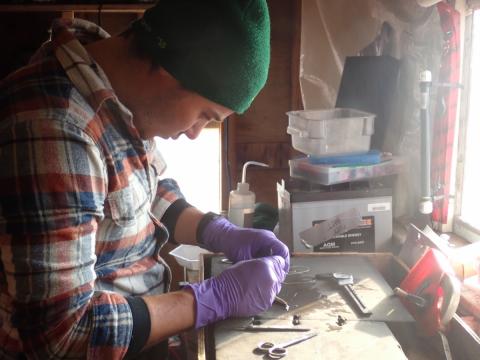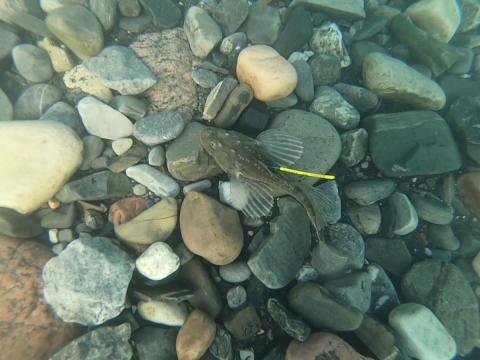Graduate Student Feature: Linking Seabird Behavior and Fisheries

Born and raised in land-locked Iowa far from any ocean may seem like an unlikely origin story for a master’s student in marine science, but for Nate Hermann the ocean is as much of a draw as the complex lives of its inhabitants. At the University of New Hampshire (UNH), he studies how marine animals respond to their environment and how those responses can be used to learn about New Hampshire's fisheries.
“Whether it's a fish or a bird, they're doing some really impressive things responding to the environment,” said Hermann.
Hermann is one of New Hampshire Sea Grant’s 2020 Graduate Fellows in Coastal Resources, working with Dr. Nathan Furey and Dr. Elizabeth Craig on multiple projects. This summer, his focus has been Dr. Craig’s Sea Grant-funded research studying seabirds as indicators of New Hampshire’s fisheries.

Entering his second year as a master’s student, Hermann found his way onto the seabird project as a secondary focus when Dr. Furey shared the proposal with him its early days. For his main graduate work, Hermann’s graduate thesis concerns the feeding behavior of Arctic Sculpin, which led him to spend a month in the far northern reaches of Canada's Baffin Island. The commonalities between his thesis work and the seabird project attracted his attention: both focus on feeding behavior and both concern animals in sensitive, changing environments.
“Both with the Arctic and the Gulf of Maine, we need to understand the situation and why [species] are doing the things they're doing to be able to say, how might this change or stay the same? Is it going to be something that could be flexible and plastic? Did it have buffering capabilities to some of these changes?” said Hermann.
For the seabird project, Hermann along with Dr. Craig, Dr. Furey, UNH graduate student Aliya Caldwell, and the rest of the research team are seeking to understand changes in local fish populations by examining the diets of common and roseate terns that nest on the Isles of Shoals, just a few miles off of the New Hampshire coast.
The terns may provide key insights about the abundance and diversity of juvenile fish, which are not usually well-represented in sampling efforts of the Gulf of Maine’s fish populations. Terns are experts at catching fish, so the research team wants to see if the food they bring back to their nesting chicks can signal what fish are out there to catch. If terns can help researchers identify how many and which kinds of juvenile fish are available in surrounding waters, this data could potentially be used to predict adult fish populations a few years in advance, once the young fish mature. “The goal is that terns are a forecast unit and that what they are sampling is what we want to sample, but they do it years before us,” says Hermann.
This summer, the research team's plans to conduct direct sampling of fish from boat-based surveys (in parallel with the tern diet monitoring) were put on hold because of the COVID-19 pandemic, but Hermann has been busy sorting through historical databases of fish abundance from NOAA's National Marine Fisheries Service, who have conducted trawl surveys of Gulf of Maine fisheries in the spring and fall every year since 1963, according to Hermann.
This information, paired with Aliya Caldwell's work to compile years of data on the diets of baby terns out on the Isles of Shoals, will give a preliminary look into the relationship between tern diet and fish population.
"The goal is that terns are a forecast unit and that what they're sampling is what we want to sample, but they do it years before us."
- NATE HERMANN, UNH GRADUATE STUDENT
To Hermann, his master’s thesis and participation in Sea Grant-funded research have provided hands-on experiences that he found hard to get in a classroom. In the future, he envisions pursuing a Ph.D., but he hasn’t counted out an interlude before taking the plunge. “I would like to think that I have a lot of skills and knowledge at this point. And so, I'd like to find out how they apply to something other than what I am currently doing.”
For now, Hermann will continue learning about the feeding habits of terns with the goal of improving fisheries data and management. “They are doing some fascinating things that we're just scratching the surface on understanding.”